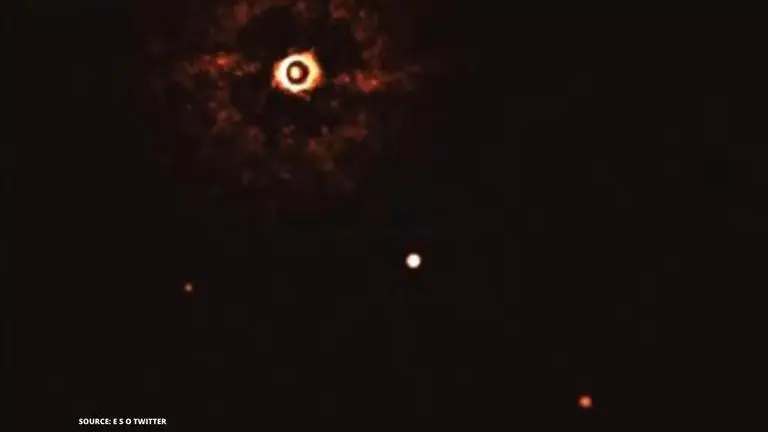Updated 24 July 2020 at 18:46 IST
Astronomers capture video of almost 17 million years old sun-like star; Watch
Gaseous planets and a 17 million years old Sun has been recently discovered by researchers and scientists. Read on to know more details.
- Entertainment News
- 2 min read

Researchers have found a sun with two orbiting planets. It has been photographed and scientists say it is much 'younger' than the sun. It has been named as TYC 8998 760 1. Read on to know more details about the whole story:
New Sun TYC 8998 760 1 found by scientists
Recently, the European Southern Observatory reported that a sun-like star has been found by researchers, called TYC 8998-760-1. Scientists believe that the Sun is just 17 million years old. The researchers are describing this newly found sun as a 'younger version of the sun'. This new star is located far away from the Earth. It is situated approximately around 300 light-years away, in the Southern constellation of Musca.
Advertisement
The European Southern Observatory, which is considered one of the most productive observatories in the world, recently took to its official social media handle and wrote, “Watch the story of the first-ever image of a multi-planet system around a Sun-like star, as captured by the ESO's VLT”. It also posted a video that gave more information about this baby sun that humans have recently found. The E S O has built, designed, and operated some of the world’s most advanced telescopes. Here is the tweet by E S O:
Watch the story of the first ever image of a multi-planet system around a Sun-like star, as captured by the ESO's VLT #ESOCastLight #BiteSizedAstronomy #4K #UHD pic.twitter.com/VG8DRmUJy0
— ESO (@ESO) July 22, 2020
Advertisement
Watch the story of the first ever image of a multi-planet system around a Sun-like star, as captured by the ESO's VLT #ESOCastLight #BiteSizedAstronomy #4K #UHD pic.twitter.com/VG8DRmUJy0
— ESO (@ESO) July 22, 2020
According to The European Southern Observatory, this baby sun has two exoplanets, which are orbiting it. E S O stated that coming across such suns, which has multiple planets surrounding it is very rare. This is the very first instance when two planets are directly observed orbiting a sun
The observatory has also stated that these two gas giants orbit their sun at least 300 times to 320 times further than the Earth is from the Sun. These planets are also huge and are over 14 times heavier than Jupiter. Scientists say this is a giant leap for humanity and will help understand how planets form and revolve around the Sun.
Published By : Hrishikesh Gawade
Published On: 24 July 2020 at 18:45 IST
